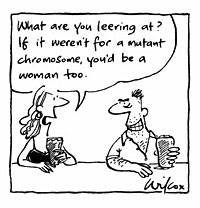Hi
So this is the beginning of the ‘chromosomes and meiosis’ section
WHAT ARE CHROMOSOMES?
- They are long & thread-like structures that form a part of the chromatin network within the nuclei of cells
- They are made of a strand of DNA that is wound around a protein core called a histone
- They were discovered by chance in 1888
- They absorb colour dye very easily, thus names chromosomes ‘coloured bodies’
- Visible under a microscope but as individual threads whilst the cell is dividing
- Found in somatic cells of diploid organisms
- The number of chromosomes in every cell is exactly the same
- They are made up of two sets- maternal and paternal and are thus known as diploid cells (2n)
- For every maternal chromosome there is a paternal chromosome- this means that they are a homologous pair. These chromosomes forming a pair are the same shape and size but the alleles for each trait are not the same
- The DNA of each chromosome replicates to form 2 identical threads or chromatids joined by a centromere- this occurs in the interphase of a cell cycle (in between cell divivsions). These threads are only visible when they shorten and thicken as a cell is dividing.
- This replication is so important because it ensures that the daughter cells have the identical genetic code as the parent cells
WHAT IS A KARYOTYPE?
Its is a set of chromosomes. It shows the number, size and shape of the chromosomes during metaphase of mitosis. In the human karyotype that shows the non-sex chromosomes (autosomes) of a similar size grouped and placed in groups A-G according to their length. The sex chromosomes (gonosomes) which are X-female and Y-male, are placed separately.
WHAT DO THEY SHOW?
- Whether a cell comes from a male or female
- Abnormal chromosomes
WHAT IS MEANT BY A CHROMOSOME NUMBER?
Each species has a specific number of chromosomes in its somatic cells (body cells). It is possible that some of them have the same amount without being related or the same; it is the similarities in the DNA of the chromosomes rather that shows the relationships, not the number of chromosomes.

